Mozambique: Sporadic cases of mpox continue to emerge in Niassa province
Mozambique: 20,000 hostages held in Palma; SADC wants 3000 troops – By Joseph Hanlon
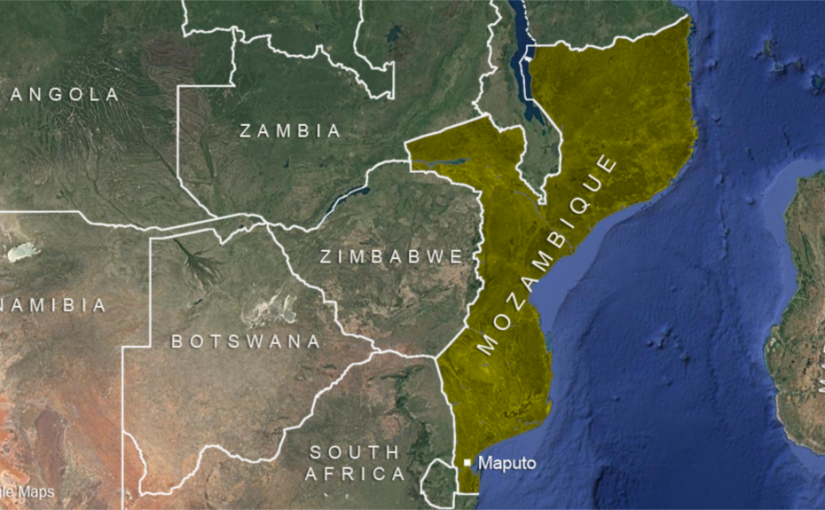
In this issue
Palma
+ 20,000 hungry hostages
+ No foreign help allowed
SADC
+ Propose 3000 troops
Investigation
+ Water privatised on borrowed money
Palma
- 20,000 hungry hostages
Following the model of attacks and occupation of Mocimboa da Praia, the insurgents are now trying to clear the population from Palma in advance of an attack expected soon after the end of Ramadan on 12 May.
Everyone wants to flee, but the Mozambican government is not letting anyone leave. Effectively they are keeping up to 20,000 people hostage to try to forestall the next insurgent attack. And the people are now sick and hungry, as no international humanitarian aid is permitted.
“In Quitunda, Palma area, UNHCR recently collected reports of grave abuses committed against vulnerable groups, including physical assaults on people trying to flee to safer areas on boats,” reported the UN Refugee Agency (UNHCR) Friday (30 Apr). “Some people are still fleeing Palma, but with only a few evacuation routes remaining open, we are worried for those who are unable to leave the area.” https://www.unhcr.org/news/briefing/2021/4/608bb1be4/nearly-30000-people-displaced-march-attacks-northern-mozambique.html
Roads out of Palma are closed and road traffic has been stopped in Palma itself which is largely a ghost town. The resettlement village of Quitunda just outside the gates of the Afungi gas project is 10 km from Palma by foot or 20 km by car. Thousands of displaced people are now camped there.
Insurgents took Palma – largely without resistance – on 24 March and held it for 10 days. Then the insurgents drifted back into the bush and the defence forces (FDS) regained control. There was widespread looting. Most residents fled into the bush or south to Quitunda, which seemed safer because it is on the Afungi peninsula with a larger military presence, and had not been attacked by the insurgents.
People did come out of the bush, at least to check their houses, and some life returned to Palma – including private minibus services. About two weeks ago the FDS put pressure on displaced people in Quitunda to return to Palma. But from 25 April there were a series of small attacks around the edges of Palma, with insurgents burning houses and warning people to leave town. They said there would be no major attacked during Ramadan, but they wanted the town empty before they attacked again after Ramadan.
The position was confused. Gunfire and shelling have been heard every night recently. The confusion is compounded when it was discovered soldiers were also burning peasant houses; some were caught by local “antigos combatentes” (liberation war veterans).
People again fled (see below) but police stopped the use of sailboats (dhows) to leave Palma, and many returned to Quitunda. Palma is now effectively closed and largely empty, but people are continuing to arrive in Quitunda.
The Afungi peninsula with Quitunda and the Total installation (now abandoned to the FDS) are slightly separated from Palma town. It appears that the insurgents want to next take, and perhaps try to hold, an empty Palma town (as they hold Mocimboa da Praia), without attacking Afungi. But people in Afungi are frightened as well as hungry, and fear an attack after Ramadan. (Sources: Cabo Ligado, MediaFax, Zitamar, Pinnacle News and own contacts.)
- Hunger and sickness but no foreign help allowed
Lack of food, clean water and health care has led to hunger (with reports of malnutrition) and disease, particularly malaria and diarrhoea. There are no international humanitarian and medical workers in the Palma area and there has been no foreign food or medical aid. The government and FDS insist that they must control distribution, and UN agencies such as World Food Programme will not accept that. Similarly foreign health workers are not allowed. And the stalemate continues.
Cabo Delgado governor Valige Tauabo told Radio Mocambique (26 April) said that an attempt would be made to move Mozambican medical teams to Palma. Many health workers are among the displaced still in Palma or Quitunda, but apparently there has been no attempt to mobilise them to reopen health posts.
There are two national exceptions to the ban on outside humanitarian assistance. Mission Aviation Fellowship’s (MAF) local partner Ambassador Aviation has been has been flying a 14-seat Cessna Grand Caravan on the 50 minutes flight between Pemba and the Afungi airstrip. In April they made 80 flights, evacuated 559 people including children, the elderly, and sick and injured people.
Because the insurgents continue to have local support, the FDS are extremely worried about insurgents mixed in with refugees. Thus larger planes are not permitted, and MAF passengers are carefully vetted; nearly all are women, children and the elderly. Ambassador Aviation is a Mozambican company based at Nampula airport since 1999; all pilots have US licences which have been Mozambique-validated.
The other exception is VAMOZ (Voluntarios Anonimos de Mocambique – Anonymous Volunteers), an entirely local group based on local donations. On Thursday (29 Apr) a boat arrived from Pemba with 30 tonnes of food and clothing. It landed in Afungi and goods were transferred to containers. VAMOZ was allowed to distribute without problems in Quitunda. Local volunteers do the distribution, generally in collaboration with local elders. Distribution was not permitted in Palma town. The village of Maganja, just south of the Total fenced zone, has also received many displaced people, and VAMOZ volunteers drove there on Friday. After negotiations and satellite phone discussions they were eventually allowed by the FDS to do a distribution. Neither Frelimo nor FDS took items from the distribution, which remained controlled by the Palma volunteers.
The FDS finally began distributing food in Quitunda on Thursday. This apparently comes from a shipment of 100 tonnes to the government’s INGD (Instituto Nacional de Gestao e Reducao do Risco de Desastres, ex INGC). INGD has no local distribution capacity or system. The shipment first arrived at Afungi three weeks ago and when no one from INGC could be found to accept it, it was returned to Pemba. A week later it was sent again, and offloaded and stored by the FDS. Some appears to have been distributed by Frelimo on 18 April and the FDS distribution in Quitunda probably comes from this shipment.
Medicines were also brought to Afungi on MAF flights on 25 April. These included 40 kg for VAMOZ, given to their health worker volunteers, and 400 kg sent by the district health directorate (now based in Pemba), which was received by the FDS. On 24 April MAF made three special flights to Ibo island to deliver 1125 km of medicines.
- Tanzanians expelling displaced
People fleeing Palma are also going north and west. Many are fleeing to Tanzania, 35 km north by road, or by dhow (prevailing winds at this time of year make it much easier to sail north). More than 1000 have tried to flee to Tanzania. Many were accepted but then Tanzania closed the border. Recently it began carrying the refugees by truck west 225 km to the Negomano border post on the Mozambique side of the Unity Bridge. This at least gets them out of the war zone.
The alternative is to go 95 km west to Nangade, though zones controlled by insurgents. People are continuing to arrive by foot and car. Police are holding 12 Palma civil servants who arrived in Nangade after 30 days being held by the insurgents. They had not been maltreated but some had malaria and swollen feet. It is not clear if they escaped or were released.
SADC: SADC team says send in 3000 troops, but does not fully accept government line
Military intervention was proposed by the SADC technical mission to Mozambique 15-21 April. The mission suggests 2916 people including three light infantry battalions and seven special squadrons which would be both a fighting and training force. Equipment would include one submarine, two surface patrol boats, six helicopters and five other aircraft.
Logistics would be established in the safest areas first, starting with Nacala port and a logistics base in Pemba. Forward Logistical Areas (FLAs) would then be created in two areas controlled by government, Mueda and lbo. FLAs would then be established in “Palma and subsequently Mocimboa da Praia once the area is cleared of terrorists.”
The mission was only briefed by government in Maputo and military commanders on the ground in Cabo Delgado. But in one respect they tell a different story from the official line. “Mocimboa da Praia town including the airport/airstrip and the harbour/port areas has been under the control of terrorists since August 2020. The town is considered to be one of the strong bases for the terrorists. The terrorists also occupy and operate from Siria (1 & 2) and Mbau,”
The SADC mission takes a much more cautions line on foreign and Islamic State support, carefully using words like alleged, indications, unconfirmed and suspected. “The terrorists are alleged to be financed through money transfer from sympathisers through electronic means of payment such as M-Pesa, M-kesh e E-mola and others. Funders are said to be mainly individuals and private organisations from South Africa, Tanzania, DRC, Uganda, Burundi and other parts of the world.”
The mission continues: “There are indications that terrorists receive external support from individuals in various countries. lt is however not conclusive that they only get support from the above mentioned countries. The main suppliers of the terrorists are unconfirmed, but it is suspected that they are supplied by the Islamic State Central Africa Province (ISCAP)”
The missions notes that “There is currently no information with regards to where the terrorists get their arms from, but during the last attack new weapons were used. Some weapons are captured from the dead FADM soldiers but not in big numbers. The terrorists are currently using machetes, AK47, PKM, RPG7, 60 and 80mm mortars.”
And it says that “FADM does not have adequate naval assets to patrol the maritime domain.”
The mission would clearly take a long time to set up. The first step is to create an FADM intelligence operation with “an in-depth understanding of the enemy.” The next step is to create the logistics structure. Money has to be found. SADC has to establish a “coordination mechanism” in Maputo. Links must be made with United Nations Office for Counter-terrorism (UNOCT)
SADC was to have met on 29 April to discuss the report, but the meeting was cancelled – allegedly due to Covid-19 isolation and a conflicting meeting – and no new date has been set. It is clear that there are sharp splits in SDAC and in Frelimo over the proposals.
The team did not meet any independent local experts nor did it consider the issue of the origins of the war. It simply looked at a military response to terrorism. The full report is on http://bit.ly/Moz-SADC-troops
Investigation
- Water privatised on borrowed money
Water was privatised on 22 April in eight towns to Operation Water, a US non-profit company, which plans to spend $23 mn, of which 80% will be borrowed. Secrecy and the use of leveraged finance raises some questions about the deal.
“Debt will come from a combination of development finance and export credit agencies, with an emphasis on committing as little equity as possible,” according to an article in Global Water Intelligence (GWI, 22 April, posted on Operation Water’s Linkedin page http://bit.ly/Moz-GWI-OW)
With the fiasco of the first attempt at water privatisation, which ended in 2010, the Mozambique government set up a two-tier management structure. FIPAG (Fundo de Investimento e Patrimonio do Abastecimento de Agua) is responsible for Maputo (itself privatised to a state company) and 18 other large urban water systems. The water and sanitation systems of 130 smaller cities and towns are under AIAS (Administracao de Infraestruturas de Abastecimento de Agua e Saneamento).
This contract is the first for Operation Water (OW), and its website shows no prior experience in water. It describes it leadership team as having “experience as finance and business development professionals”. Biographies of its four board members and 35 of its 40 technical advisors suggest no experience in water, although one of those advisors has made videos about water.
GWI notes that Ryan Phillips-Page, OW’s founder and CEO, made “an unsolicited proposal [which] sought to take on 24 small towns” water systems. Negotiations continued for four years, and AIAS on 22 April agreed only to the privatization of eight systems in Gaza (Macia, Nuvunguene), Sofala (Marromeu, Machanga), Zambezia (Gurue, Morrumbala) and Niassa (Chimbonila,Nipepe).
OW is to construct, rehabilitate and expand the water systems and manage them. AIAS has already contracted the management of 48 systems to 19 Mozambican companies. Although OW is responsible for management, it will contract out the management to Mozambican companies as AIAS already does.
Mozambique already has substantial funding for water and sanitation from 15 donors, including the World Bank, African Development Bank and Unicef, and some of the money goes into a common fund. Operation Water’s argument is that it can squeeze more loan funds from these and other agencies – and use export credits for imported equipment. It has a March presentation on its website on https://operationwater.org/s/OW-Overview-Presentation_March-2021.pdf
We asked Operation Water for more information, and received the surprising response on Friday (30 Apr) from Ryan Phillips-Page, OW’s founder and CEO, saying that “Sorry I can’t share more, but these are our first projects and there are a lot of copycats out there who may try the same”. In any case “[you] wouldn’t understand what we’re doing if I told you.”
Investigation conclusion: Without more information it is impossible to know if the hedge fund model of leveraged finance (that is, minimum capital and large loans) can find new money that is not already being put into Mozambique by all of the donors and lenders interested in water.
Interest payments are a big question, because at the end of the day consumers pay the interest on the loans because it is included in their water bills. The leveraged finance model has been widely used and is structured in a way that burdens companies with huge debts and after a few years very high interest payments. OW’s contract is for 30 years; most initial borrowing is likely to be shorter term and the experience with leveraged finance is that subsequent loans often have higher interest payments which raise prices for consumers.
The danger of this is underlined in the GWI article. It says OW is trying to “make a case for bankable municipal concessions”. “Bankable” is jargon for not being dependent of development agency low interest loans, but able to take high interest commercial bank loans – paid by consumers.
GWI also interviewed David Ehrhardt, chief executive at Castalia Advisors, who is advising AIAS. “If people’s income is very low and they can only afford an O&M [operation and maintenance] tariff, then there is no prospect of private finance,” he said. In other words, an assumption of the project is the poor people will not be able to pay the new higher bills. Ehrhardt continues that the job is to work out which towns are rich enough to pay higher water bills to pay the interest of private finance. In other words, OW will only work in towns where people can pay significantly more for water. Which is the issue that has always made privatization of water unviable in Mozambique.
More importantly, Operation Water rings a set of alarm bells. The mantra is that we must keep secret how we build our money making machine because otherwise people would steal it and build their own, however it is so sophisticated and complex that even the London School of Economics (where I am a Visiting Senior Fellow) could not understand it. Besides the obvious contradiction that it is simple enough to steal but too sophisticated to be understood, it is a mantra used repeatedly in Mozambique. Donor-backed, credit-funded timber, rose, soya and other projects all collapsed. More recently, the secret Credit Suisse-backed Proindicus and Ematum were both proposed as secret money generating machines, and only leaked internal documents and the Kroll audit showed they were based on totally false assumptions.
Of course, Operation Water could be the “unicorn”. But AIAS has been very wise to limit OW to a very small start – to see if the secret money generating machine works, and to see what the long term interest rate implications are for borrowed money. And to see who is liable for the interest payments if the money machine fails.
By Joseph Hanlon




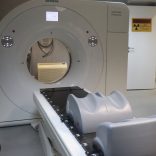
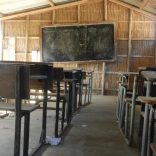


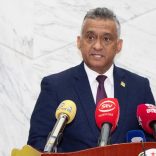

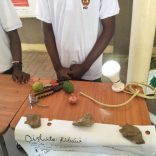

Leave a Reply
Be the First to Comment!
You must be logged in to post a comment.
You must be logged in to post a comment.